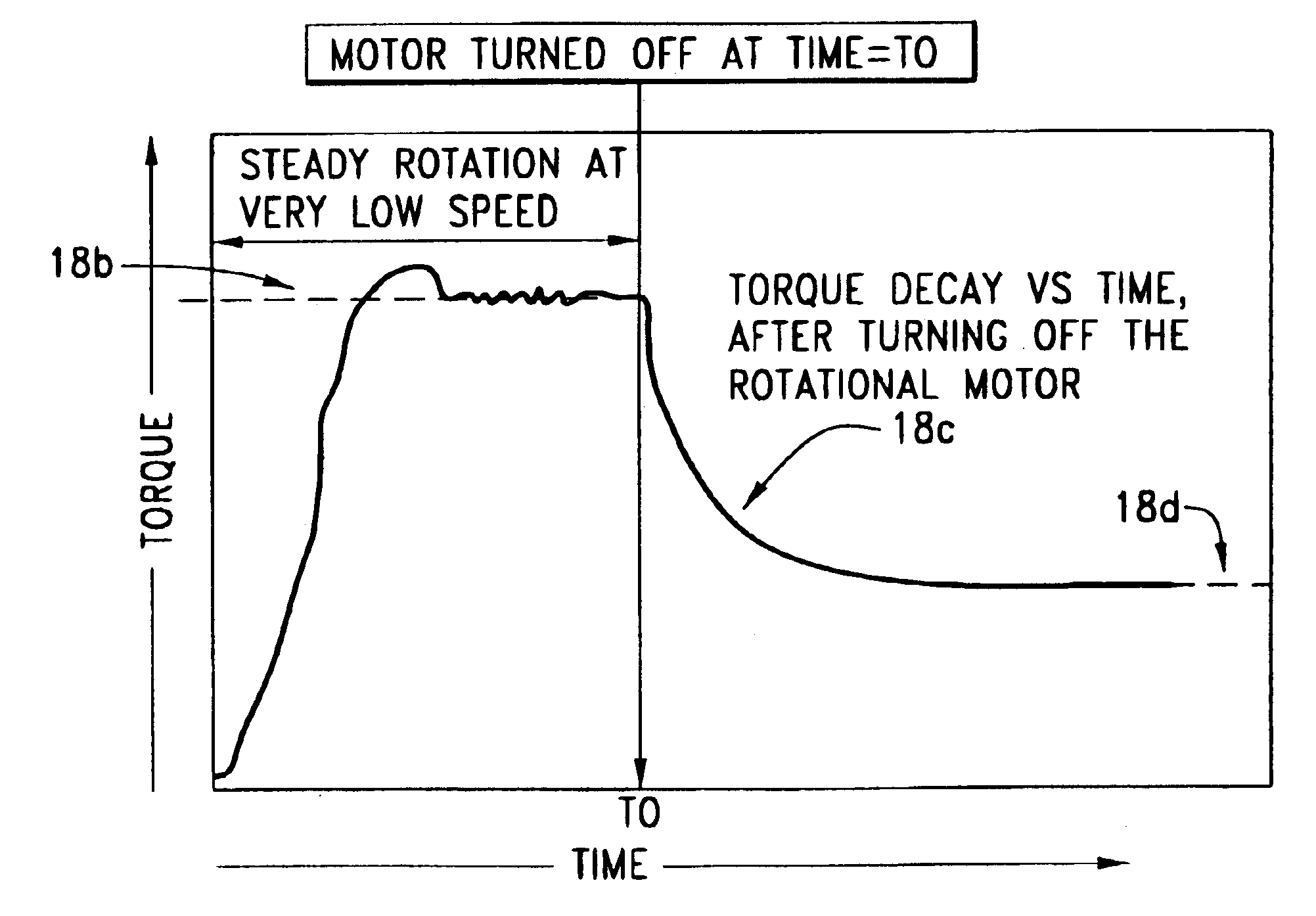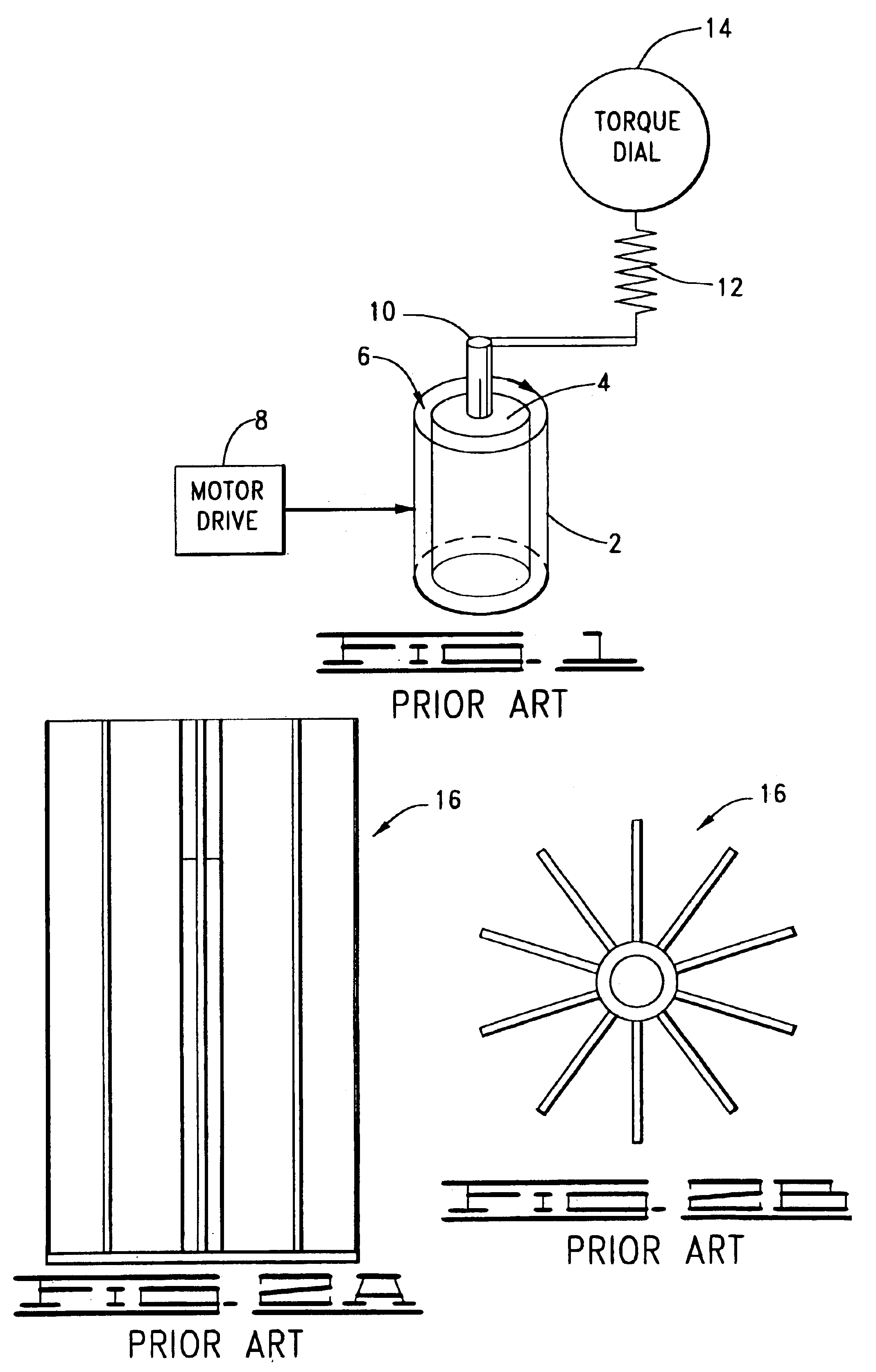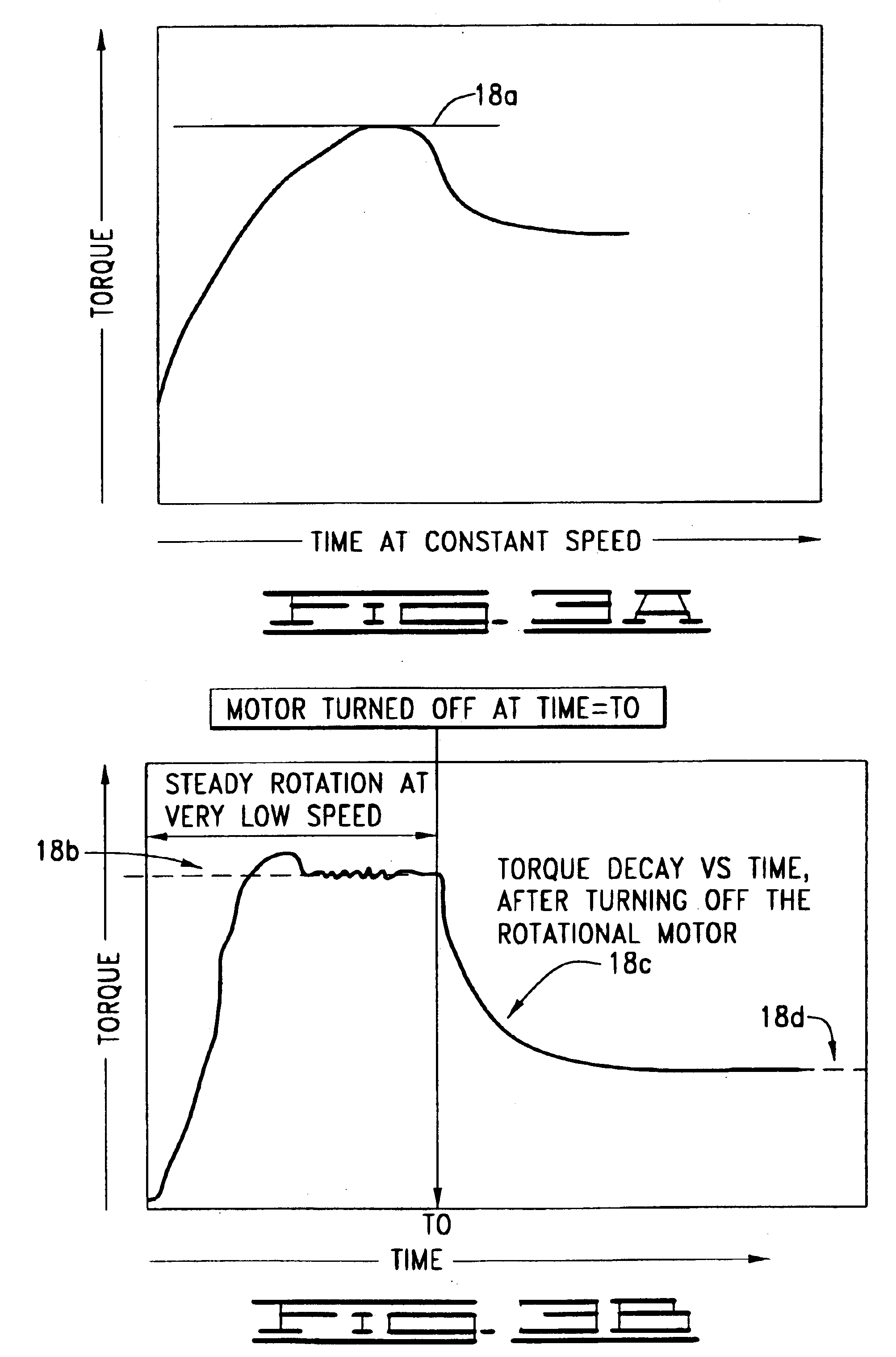Yield point adaptation for rotating viscometers
a technology of rotating viscometers and adapters, which is applied in the direction of instruments, measurement devices, scientific instruments, etc., can solve the problems of significant error, mud and cementing fluid directly affecting their performance, and conventional oil field viscometers are not sufficiently sensitive to measure the low torque values for either dm method,
- Summary
- Abstract
- Description
- Claims
- Application Information
AI Technical Summary
Benefits of technology
Problems solved by technology
Method used
Image
Examples
Embodiment Construction
The apparatus for measuring yield stress of a fluid composition in accordance with the present invention comprises a rotating viscometer that includes a driven portion, a responsive body, a “standard” (that is, standard for a conventional Couette or rotating viscometer) spring and a plurality of fins or vanes (referred to herein as fins). These fins have predetermined shapes and the fins are disposed in the rotating viscometer such that the rotating viscometer and the standard spring of the rotating viscometer are sensitive to detect yield stress of a test fluid composition in response to a selected rotation imparted to the driven portion of the rotating viscometer. The standard spring of the rotating viscometer is connected to the responsive body of the rotating viscometer, which responsive body has at least a portion of the fins on it. In the illustrated embodiment of FIGS. 4 and 5, a set of intermeshing fins or vanes are attached to a modified bob and modified sleeve that easily ...
PUM
| Property | Measurement | Unit |
|---|---|---|
| yield point | aaaaa | aaaaa |
| torque | aaaaa | aaaaa |
| speed | aaaaa | aaaaa |
Abstract
Description
Claims
Application Information
 Login to View More
Login to View More - R&D
- Intellectual Property
- Life Sciences
- Materials
- Tech Scout
- Unparalleled Data Quality
- Higher Quality Content
- 60% Fewer Hallucinations
Browse by: Latest US Patents, China's latest patents, Technical Efficacy Thesaurus, Application Domain, Technology Topic, Popular Technical Reports.
© 2025 PatSnap. All rights reserved.Legal|Privacy policy|Modern Slavery Act Transparency Statement|Sitemap|About US| Contact US: help@patsnap.com



